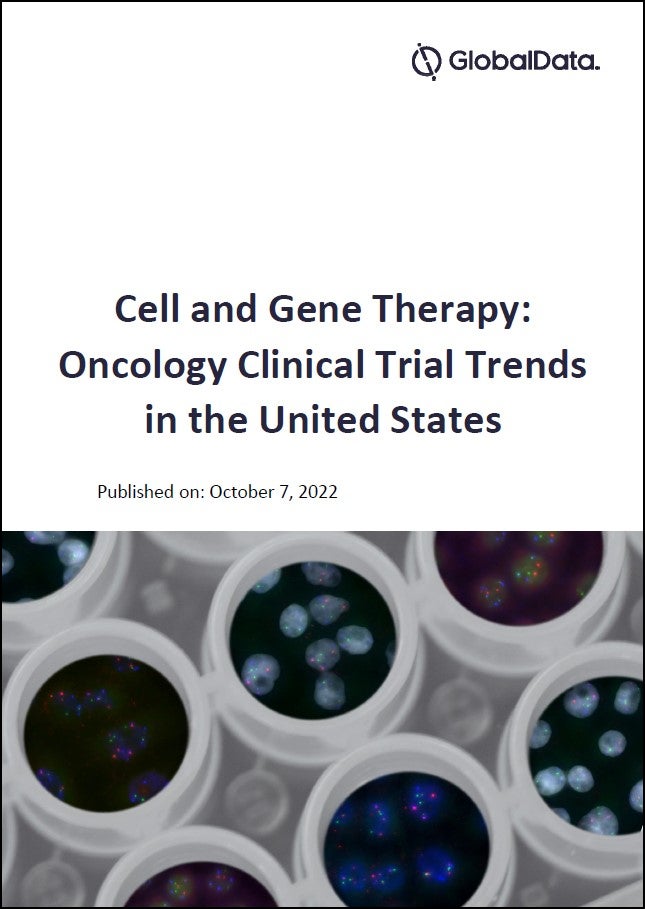
AstraZeneca’s and Merck’s Lynparza (olaparib) could compete with Eli Lilly’s Verzenio (abemaciclib) as an adjuvant therapy for gBRCA-mutated Her2-negative breast cancer in niche groups who are also hormone receptor positive (HR+), experts said. Nonetheless, to identify all patients who could benefit with adjuvant Lynparza, BRCA testing guidelines will need to be expanded, they added.
The Phase III OlympiA trial results presented at the plenary session at the 2021 American Society of Clinical Oncology (ASCO) virtual meeting 4–8 June indicated a clear efficacy advantage to Lynparza versus placebo when used early as an adjuvant therapy in high-risk gBRCA-mutated breast cancer patients. The efficacy benefit was especially clear for the triple-negative breast cancer (TNBC) subgroup which does not have effective adjuvant therapies.
In patients who are HR+ and carry gBRCA mutations (approximately 17–18% of patients in OlympiA), treatment decisions can be further complicated due to the potential applicability of CDK 4/6 inhibitor Verzenio as an adjuvant treatment. Verzenio is under regulatory review for use in that setting. Mature disease-free survival (DFS) data from both OlympiA and the Phase III monarchE study is pending, and in the meantime the choice for that niche group between the two approaches could be driven by subjective decisions, experts said.
Identifying eligible patients is also prescient given the current National Comprehensive Cancer Network (NCCN) testing guidelines. While most young TNBC patients receive gBRCA testing, it is not standard for all early-stage high-risk breast cancer patients unless they meet certain criteria like having familial risk. While testing guidelines need to be expanded, there is no clear consensus in the breast cancer community on whether all high-risk patients would need to be tested for gBRCA mutations and/or what the ideal testing parameters would look like.
Experts nonetheless found Lynparza’s safety profile is manageable for use, especially when considered with the efficacy in preventing invasive and distant metastases. Given these factors, and the experience with using Lynparza in the metastatic breast cancer setting, they anticipated its incorporation into standard of care following an expected FDA approval. The companies had previously announced the trial crossed its superiority boundary at an interim analysis in February, and that a regulatory filing was planned in 2H21.
How well do you really know your competitors?
Access the most comprehensive Company Profiles on the market, powered by GlobalData. Save hours of research. Gain competitive edge.

Thank you!
Your download email will arrive shortly
Not ready to buy yet? Download a free sample
We are confident about the unique quality of our Company Profiles. However, we want you to make the most beneficial decision for your business, so we offer a free sample that you can download by submitting the below form
By GlobalDataAstraZeneca and Merck entered into a collaboration in 2017 to codevelop and co-commercialise Lynparza for multiple cancer types. Lynparza earned $1.77bn in sales in 2020 and is estimated to yield $5.39bn in 2027, as per GlobalData consensus forecasts.
An AstraZeneca spokesperson declined to comment on Lynparza’s efficacy in certain subgroups in comparison to other drugs. But with a 42% reduction in recurrent risk in patients with high-risk gBRCA-mutated Her2–negative breast cancer, Lynparza is the first medicine targeting BRCA mutations to show a clinical benefit in the adjuvant setting, the spokesperson added.
Lynparza versus Verzenio treatment choice in HR+ group debated
The OlympiA results will be practice-changing for patients with gBRCA mutations, but since subgroup analysis was not yet mature, ideal treatments still need to be determined for certain niche groups, said experts. If a patient has HR+ disease and gBRCA mutations, then many oncologists would consider a PARP inhibitor like Lynparza first because it is a targeted therapy, said Dr Linda Vahdat, medical oncologist, Memorial Sloan Kettering Cancer Center, New York. While HR+ gBRCA-mutant patients could respond to CDK 4/6 inhibitors, PARP inhibitors could be favourable since they’re targeted against DNA repair deficiency in those with BRCA mutations, said Dr Katherine Tkaczuk, director, Breast Evaluation and Treatment Program, University of Maryland Greenebaum Cancer Center, Baltimore. Dr Adam Brufsky, associate division chief, Division of Hematology/Oncology, University of Pittsburgh School of Medicine’s Department of Medicine, Pennsylvania, in turn said most eligible patients with substantial residual disease will get a CDK 4/6 inhibitor as an adjuvant therapy. Lynparza could be used in the interim, but the choice would be driven by an individual judgement call, he added.
The hazard ratio for invasive DFS with Lynparza versus placebo in HR+ and TNBC subgroups was 0.701 (0.381–1.268) and 0.563 (0.431–0.730), respectively, as per the ASCO abstract (LBA1). There is a numerical benefit with Lynparza in HR+ patients but the patient numbers are small and the confidence intervals for the DFS data are wide, said Tkaczuk. At the San Antonio Breast Cancer Symposium 2020, Verzenio in combination with endocrine therapy was shown to decrease the risk of breast cancer recurrence by 28.7% compared to endocrine therapy alone in HR+ breast cancer patients, as per a 9 December release. The Phase III monarchE patient cohort is very similar to this HR+ subgroup from OlympiA, but once more events occur it may become clearer which treatment could be better, said Dr Corey Speers, assistant professor of Radiation Oncology, University of Michigan Rogel Cancer Center, Ann Arbor.
In patients with TNBC and HR+ breast cancer, Lynparza reduced the risk of recurrence by 43.7% and 29.9% respectively said an AstraZeneca spokesperson. But the spokesperson added that these stratifications do not represent the primary endpoint of the trial which was a mixed cohort.
At a 2.5-year follow-up, the OlympiA trial was unblinded since Lynparza showed a benefit with a hazard ratio of 0.58 in the intention-to-treat (ITT) population (p < 0.0001). The 3-year distant DFS was 87.5% with Lynparza versus 80.4% with placebo. For breast cancer in the early disease setting invasive DFS and distant DFS can be a good surrogate for overall survival (OS) especially when the hazard ratio is so high, said Speers. This is especially relevant in TNBC where the risk for recurrent disease is early on, while the difference in recurrence risk in HR+ patients may not be captured in a few years, said Dr Xiaofu Zhu, medical oncologist & GI Tumour Group lead, Cross Cancer Institute, Edmonton, Canada. Moreover, while the treatment was for one year, the median follow-up time is at three years, unlike other studies where both those parameters are of the same duration, Speers added on the significance of a DFS benefit in this setting.
Wider testing needed to identify more patients
Most TNBC patients get tested for BRCA mutations, but the real issue is how to test for those who are HR+, said Brufsky. In OlympiA, HR+ patients constituted 18.2% and 17.2% of patients on the Lynparza and placebo arm, respectively, while the rest had TNBC. NCCN guidelines for testing for genes like BRCA1 and BRCA2 indicate it to be performed when individuals have a blood relative with a known or likely pathogenic variant in a cancer susceptibility gene, among other criteria. Some BRCA-positivity may be missed if the current NCCN guidelines are followed, said Tkaczuk and Zhu.
BRCA testing varies worldwide, but based on the OlympiA results, an understanding of a patient’s BRCA mutation status, in addition to the HR and Her2 expression status, can allow for more informed treatment plans for patients, said the spokesperson.
Nonetheless, it is not clear if BRCA testing can be expanded to all HR+ patients, said Brufsky. While patients without a family history of gBRCA-associated disease may still get tested, that is not currently prioritised, said Vahdat. That is partly because genetic testing requires counsellors who advise on the decision to get a test and help interpret the results with the right context and these requirements are overwhelming the healthcare system even now, she said. Once the OlympiA results are published, that might support a case to expand BRCA testing for breast cancer patients regardless of age or family history, said Zhu.
Lynparza’s favourable risk-benefit profile
Lynparza-associated side effects are very manageable and that bodes well in this setting, said Brufsky. The most common Grade 3 or higher events seen with Lynparza were anaemia, neutropenia, leukopenia, fatigue and lymphocytopenia. Anaemia can be managed easily, said Speers. Also there is no hair loss associated with the drug as well, said Vahdat. In monarchE, Verzenio’s safety profile was consistent with its known profile which includes diarrhoea, nausea, neutropenia, and fatigue among others. Lynparza-associated toxicities are manageable, especially in comparison to other targeted drugs used in breast cancer, said Zhu.
Some of the patients will manage such side effects if it gives them a chance to live longer, while others may forgo treatment due to those side effects, so shared decision-making is important, said Speers.
One other factor that remains to be determined is the role of Lynparza in relation to the chemotherapy Xeloda (capecitabine) which is manufactured by Genentech, a part of Roche, and is currently used as an adjuvant therapy. Since the OlympiA study did not allow prior Xeloda use, whether to use Lynparza before that would need to be ascertained, said Vahdat. The DFS curves separate almost immediately with Lynparza indicating an early benefit, which makes it tougher to understand if Xeloda needs to be used early, said Vahdat. Moreover, Lynparza and Xeloda cannot be used concurrently given their toxicity profiles, said Tkaczuk.
Manasi Vaidya is a Associate Editor for Pharmaceutical Technology parent company GlobalData’s investigative journalism team. A version of this article originally appeared on the Insights module of GlobalData’s Pharmaceutical Intelligence Center. To access more articles like this, visit GlobalData.
Update: An AstraZeneca spokesperson provided the company’s comment on this article subsequent to its publication. Paragraphs 7, 10 and 13 have been amended to incorporate the statements.









Related Company Profiles
Merck & Co Inc
AstraZeneca Plc
Eli Lilly and Co
Merck KGaA